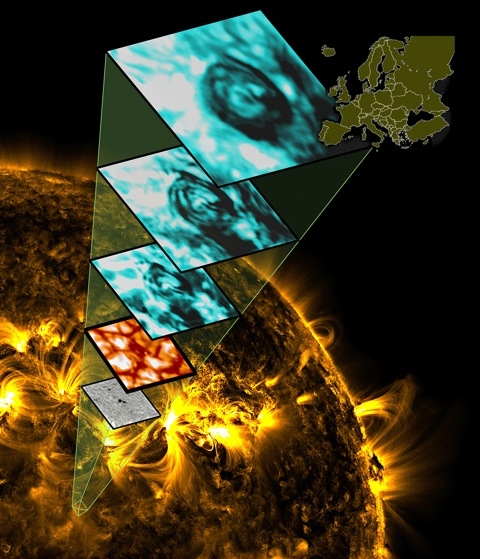The mission discovered packets of very hot material called heat bombs that travel from the sun into the corona.
The solar corona is a very hot atmosphere surrounding.
That glow is the solar corona the sun s tenuous upper.
Estimate the number density of particles inthe solar corona.
During a total solar eclipse it s possible to see clear naked eye evidence of where the sun is in its cycle.
X ray emissions from the corona showthat its temperature is about.
Totality when the moon completely blocks the sun s bright disk affords a brief view of.
Although the solar corona is very hot it also has very low density.
The corona is in the outer layer of the sun s atmosphere far from its surface.
The pressure and density in the corona is much much lower than in earth s atmosphere.
Estimate the number density of particles in the solar corona.
The solar corona is a very hot atmosphere surrounding the visible surface of the sun.
X ray emissions from the corona show that its temperature is about 2 10 6 k.
The corona is observed in detail during solar eclipses.
A nasa mission called iris may have provided one possible answer.
The gas pressure in the corona is about 0 03.
Yet the corona is hundreds of times hotter than the sun s surface.
The temperature in the corona is more than a million degrees surprisingly much hotter than the temperature at the sun s surface which is around 5 500 c 9 940 f or 5 780 kelvins.
It can only be seen during a total solar eclipse as well.
The third layer of the sun s atmosphere is the corona.
The material in the corona is an extremely hot but very tenuous plasma.
It appears as white streamers or plumes of ionized gas that flow outward into space.
The solar corona is a very hot atmosphere surrounding thevisible surface of the sun.
The total power emitted in x rays is only about one millionth of the sun s total luminosity so there is enough energy in the sun to heat the corona.
Therefore only a small fraction of the total solar radiation is required to power the corona.









